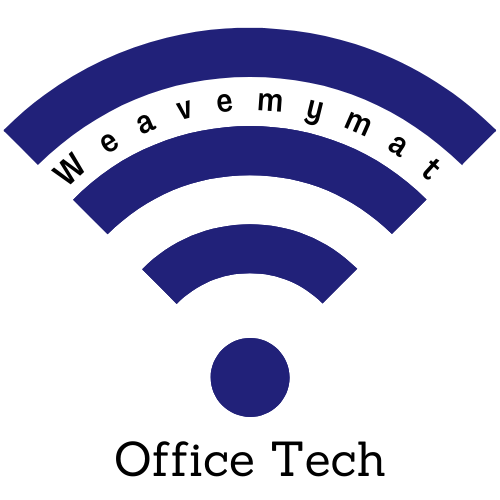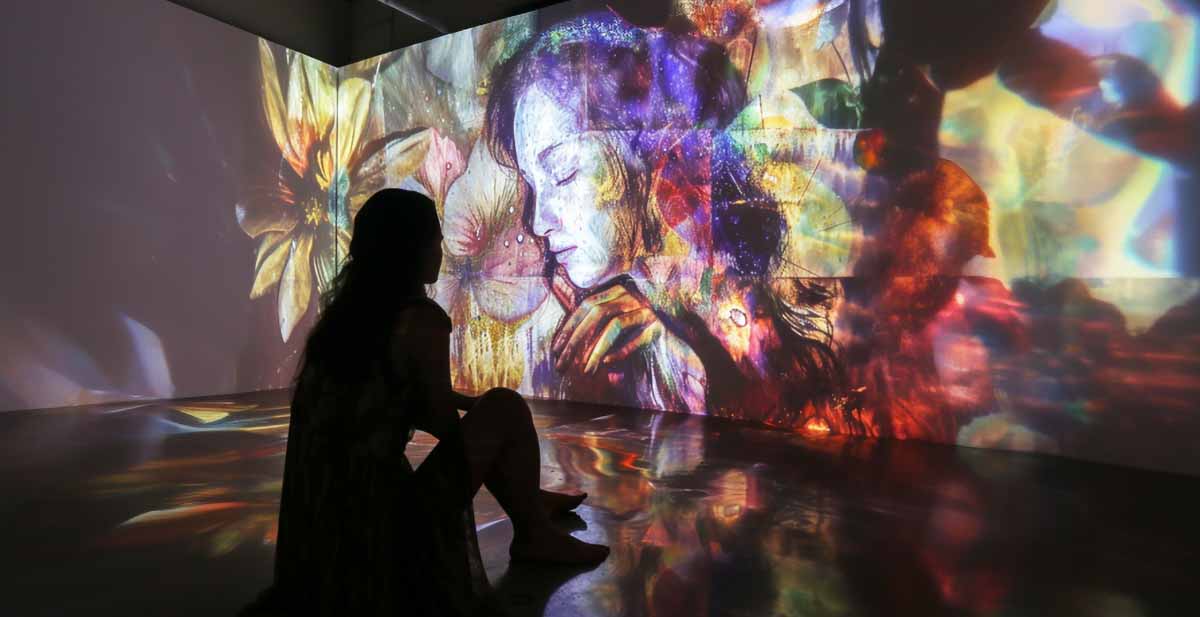Have you ever experienced a work of art that left you in awe and wonder? Have you ever seen an installation that completely transformed a space and transported you to another world? Chances are, projection played a significant role in creating those unforgettable moments. Projection has become an increasingly popular tool for artists to create immersive and interactive art installations that engage and captivate audiences.
Projection allows artists to transform any surface into a canvas for their art, whether it’s a wall, ceiling, or floor. By using light and shadow, projection can create a sense of depth and dimensionality that traditional art forms cannot. Projection mapping, a technique that involves projecting video onto irregularly shaped objects or surfaces, has become a popular way for artists to create stunning visual effects and illusions that blur the line between reality and fantasy. Additionally, projection can be used in conjunction with other mediums such as sound, sculpture, and performance to create truly multi-sensory experiences that engage the viewer on multiple levels.
Colin wrote this!
writer/editor at weavemymat.com

An avid technologist, having spent many years working in technical industries, and specializing in all kinds of tech stuff.
Check out more about him here!

Projection in Art Installations
Projection has become an increasingly popular technology in the world of art installations, offering artists a powerful way to create immersive and interactive visual experiences. By projecting dynamic and interactive images onto any surface or object, projection mapping can transform a static installation into a living and breathing work of art.
History of Projection in Art
Projection technology has been used in art installations for many years, with artists experimenting with different techniques and methods to create unique and engaging works. One of the earliest examples of projection in art can be traced back to the 1960s, when artists began to use slide projectors to create large-scale installations.
Since then, projection technology has advanced significantly, with artists now able to use high-resolution projectors and advanced software to create stunning visual displays.
Types of Projection in Art Installations
There are many different types of projection that can be used in art installations, each offering its unique benefits and challenges. Some of the most common types of projection used in art installations include:
- Projection Mapping: Projection mapping involves projecting images onto a three-dimensional object or surface, such as a building or sculpture. This technique can create a sense of depth and movement, allowing artists to create immersive and interactive installations.
- Video Projection: Video projection involves projecting pre-recorded or live video onto a surface, such as a wall or screen. This technique can be used to create dynamic and engaging installations, allowing artists to explore different themes and ideas.
- Light Projection: Light projection involves using light to create dynamic and engaging installations. This technique can be used to create stunning visual displays, allowing artists to explore different colors, shapes, and patterns.
Benefits of Projection in Art Installations
Projection offers many unique benefits to artists, allowing them to create immersive and interactive installations that engage and inspire audiences. Some of the key benefits of projection in art installations include:
- Flexibility: Projection technology is incredibly flexible, allowing artists to project images onto any surface or object. This flexibility allows artists to create installations in a wide range of environments, from galleries and museums to public spaces and outdoor events.
- Interactivity: Projection technology can be used to create interactive installations, allowing audiences to engage with the artwork in new and exciting ways. This interactivity can create a sense of connection and engagement, helping to create a more meaningful and memorable experience for viewers.
- Creativity: Projection technology allows artists to explore new and innovative ways of creating art, pushing the boundaries of what is possible. This creativity can help to inspire and engage audiences, creating a sense of wonder and excitement around the artwork.
Overall, projection technology is an incredibly powerful tool for artists, offering a wide range of benefits and opportunities for creativity and expression. Whether used to create immersive and interactive installations or to explore new and innovative ways of creating art, projection technology is sure to continue to play a significant role in the world of art installations for many years to come.
Unique Opportunities for Artists
Projection technology has opened up a world of possibilities for artists looking to create immersive and captivating installations. Here are some of the unique opportunities that projection offers to artists:
Expanded Creativity and Imagination
Projection technology allows artists to create installations that were previously impossible. Artists can use projection to bring their ideas to life in ways that were previously limited by physical space and materials. With projection, artists can create installations that are interactive, responsive, and dynamic, allowing them to push the boundaries of what is possible in art.
Interaction and Engagement with the Audience
Projection installations offer a unique opportunity for artists to engage with their audience in new and exciting ways. By using projection, artists can create installations that respond to the movements and actions of the audience, creating an immersive experience that draws the audience into the artwork. Projection installations can also be used to create interactive exhibits, allowing the audience to become part of the artwork itself.
Flexibility and Adaptability
Projection installations offer artists a high degree of flexibility and adaptability. Projection technology allows artists to create installations that can be easily updated and modified, allowing them to respond to changes in the environment or the audience. Projection installations can also be easily transported and set up in different locations, allowing artists to reach new audiences and explore new spaces.
In conclusion, projection technology offers artists a range of unique opportunities to explore their creativity, engage with their audience, and create installations that are dynamic, responsive, and immersive. By using projection, artists can push the boundaries of what is possible in art and create installations that are truly unforgettable.
Examples of Projection in Art Installations
Projection mapping has become an increasingly popular technology in the world of art installations, offering a powerful way to create immersive and interactive visual experiences. Here are some examples of how projection has been used in art installations:
Projection Mapping in Public Spaces
Projection mapping has been used to transform public spaces into dynamic and interactive works of art. For example, the “Lighting the Sails” installation at the Sydney Opera House used projection mapping to project a colorful and mesmerizing display onto the iconic building’s sails. Similarly, the “Radiance” installation at the Detroit Institute of Arts used projection mapping to create a stunning display of light and color on the museum’s exterior.
Interactive Projection Art Exhibits
Interactive projection art exhibits allow viewers to become part of the artwork itself. For example, the “Infinity Room” exhibit by Yayoi Kusama uses projection to create a seemingly endless space filled with colorful polka dots. As visitors move through the room, their reflections become part of the artwork, creating a unique and interactive experience.
Projection Art in Performance and Theater
Projection art has also been used to enhance performances and theater productions. For example, the “Sleep No More” immersive theater experience uses projection to create a haunting and dreamlike atmosphere, projecting images onto walls and floors to transport viewers to another world. Similarly, the “Tree of Codes” ballet production uses projection to create a stunning visual display, projecting images onto a large, transparent screen to create an otherworldly environment.
Projection mapping and interactive projection art exhibits offer artists a unique opportunity to create immersive and interactive visual experiences that engage viewers on a whole new level. By projecting dynamic and interactive images onto any surface or object, projection mapping can transform a static installation into a living and breathing work of art.
